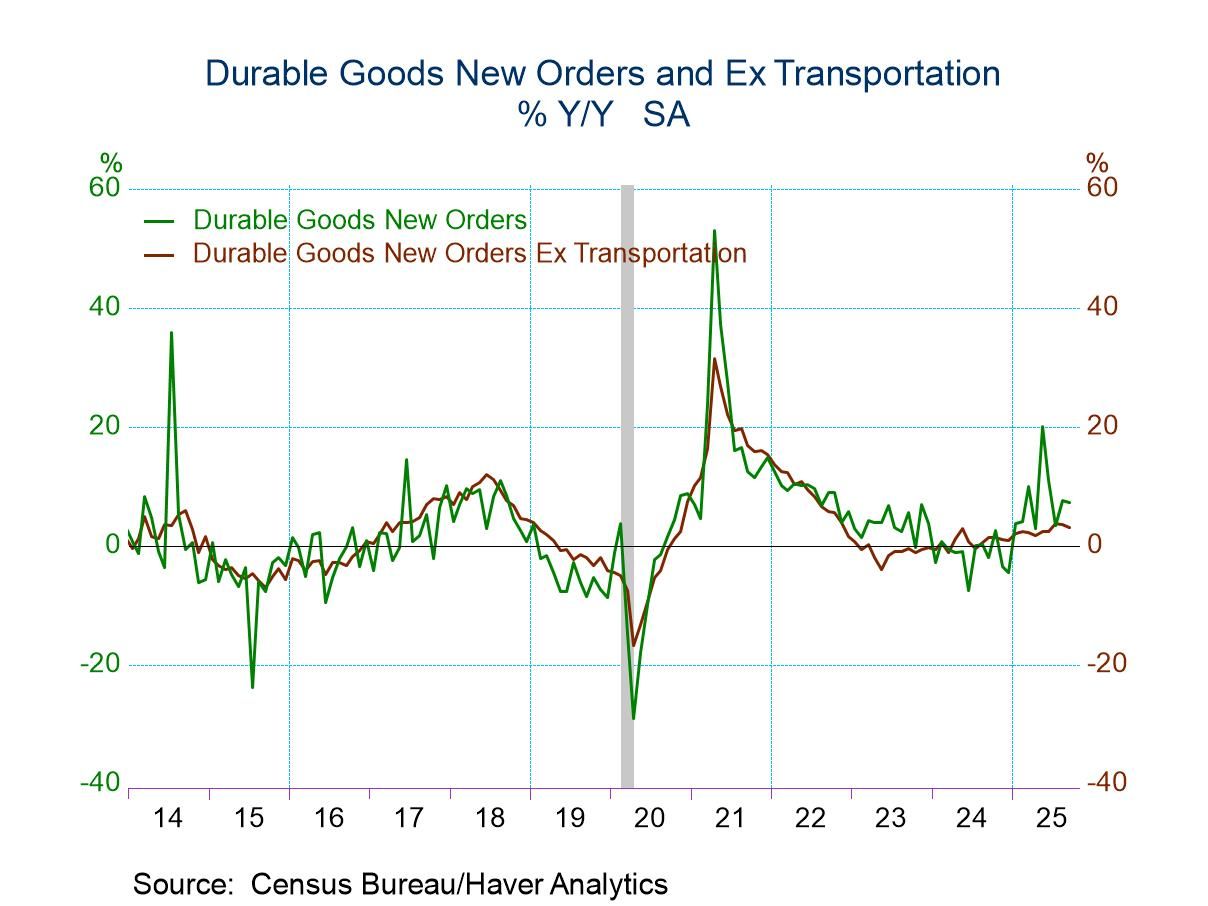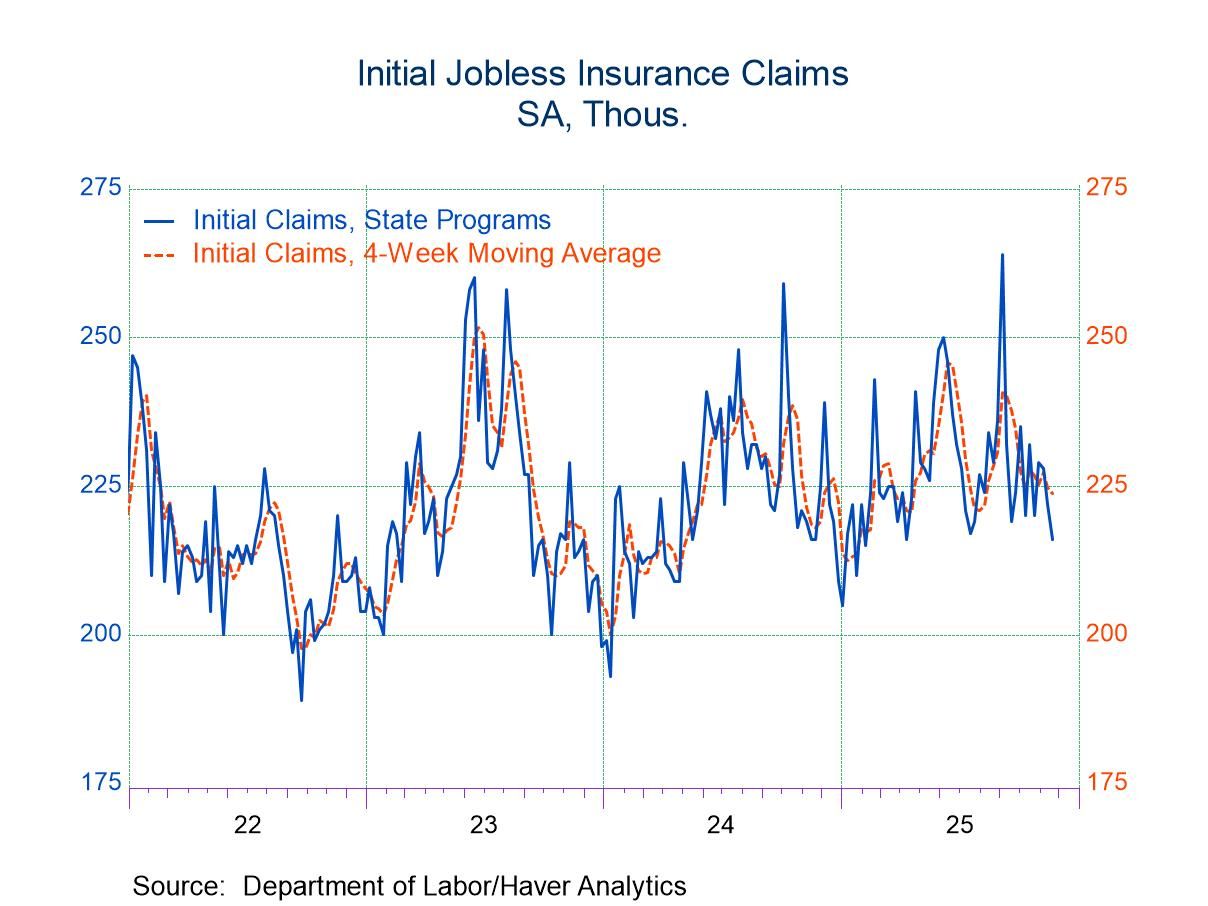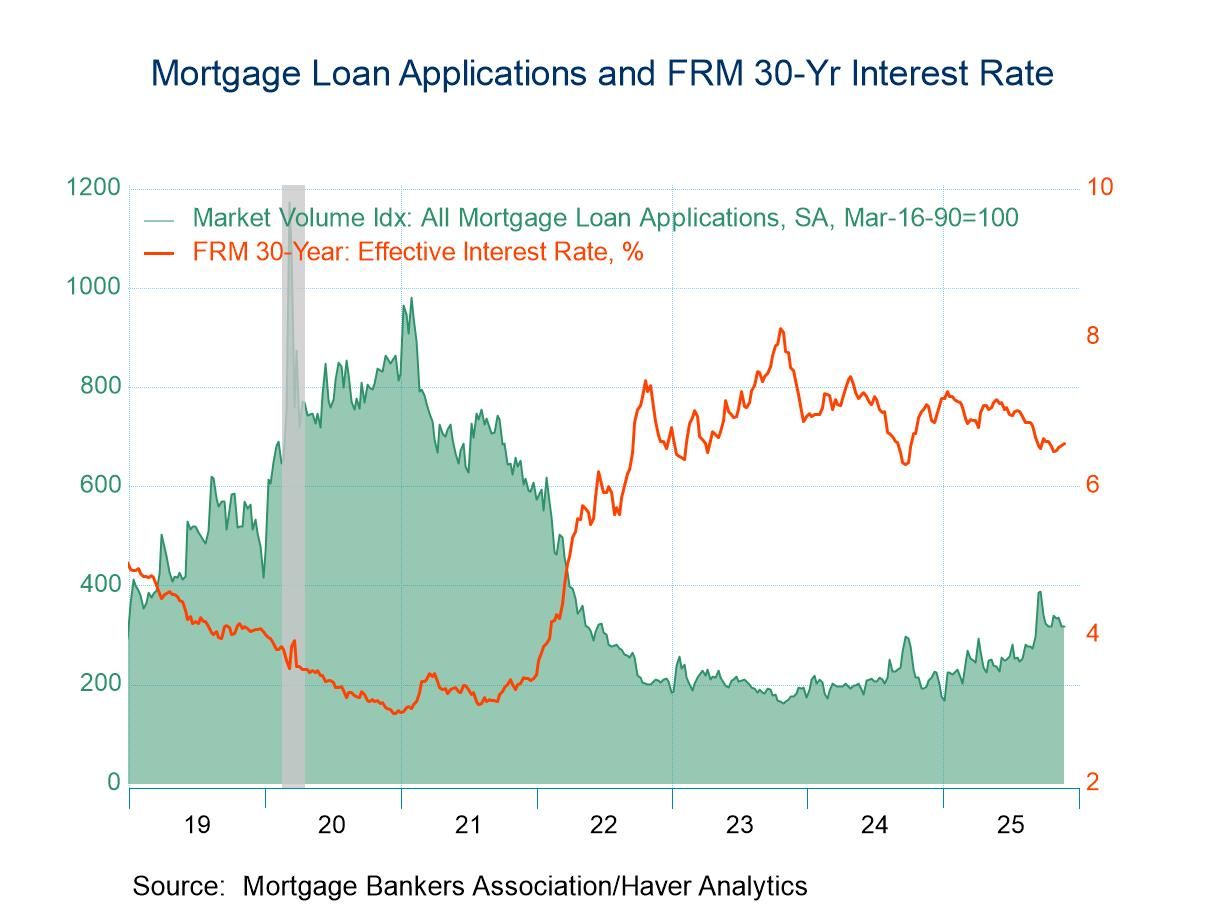 Global| Oct 15 2012
Global| Oct 15 2012U.S. Budget Deficit Shrinks For FY'12
by:Tom Moeller
|in:Economy in Brief
Summary
The Federal Government Budget Deficit fell to $1,089B for all of FY'12 from $1,298B in FY'11, according to figures released Friday by the U.S. Treasury. In a sign of economic improvement, part of that shrinkage owed to a $75.0B [...]
The Federal Government Budget Deficit fell to $1,089B for all of FY'12 from $1,298B in FY'11, according to figures released Friday by the U.S. Treasury. In a sign of economic improvement, part of that shrinkage owed to a $75.0B surplus in September, the first September surplus since 2008. As a percent of GDP, the FY'12 deficit fell to 7.0% of GDP, its least in three years. Receipts totaled a stable 15.7% of GDP while outlays were a reduced 22.7% of GDP. For FY'13, OMB projections call for a deficit of $991B in FY'13 then $661B in FY'14.
Revenues for FY'12 rose 6.4% y/y. Individual income tax payments increased a modest 3.7% y/y with a 1.4% gain in payroll employment. Corporate tax payments jumped by more than one-third y/y with improved profitability and social insurance taxes rose 3.2%.
Outlays for last fiscal year fell 1.7% due to less spending in most subgroups. National defense payments fell 3.6% last fiscal year while health services spending also fell 7.0%. Income security payments fell 9.2% due to lower unemployment. Social security outlays gained 5.8% with more retirees but Medicare outlays fell 2.8%. Interest payments fell 2.1% y/y with lower interest rates.
Haver's basic data on Federal Government outlays and receipts, and summary presentations of the Budget from both OMB and CBO are contained in USECON. Considerable detail is given in the separate GOVFIN database.
U.S. Monetary Policy and International Implications is the title of yesterday's speech by Federal Reserve chairman Ben. S. Bernanke and it can be found here http://www.federalreserve.gov/newsevents/speech/bernanke20121014a.htm
| US Government Finance | Sept | FY'12 | FY'11 | FY'10 | FY'09 |
|---|---|---|---|---|---|
| Budget Balance | $75.0B | $-1,089B | $-1,298.7B | $-1,294.2B | $-1,415.7B |
| As a percent of GDP | -- | 7.0 | 8.6 | 8.0 | 9.5 |
| % of Total | |||||
| Net Revenues (Y/Y % Change) | 100 | 6.4% | 6.5 | 2.7 | -16.6 |
| Individual Income Taxes | 47 | 3.7 | 21.5 | -1.8 | -20.1 |
| Corporate Income Taxes | 8 | 33.8 | -5.4 | 38.5 | -54.6 |
| Social Insurance Taxes | 36 | 3.2 | -5.3 | -2.9 | -1.0 |
| Excise Taxes | 3 | 9.2 | 8.2 | 7.1 | -7.2 |
| Net Outlays (Y/Y % Change) | 100 | -1.7 | 4.1 | -1.8 | 18.2 |
| Nat'l Defense | 20 | -3.6 | 1.7 | 4.6 | 7.6 |
| Health | 10 | -7.0 | 1.0 | 10.4 | 19.1 |
| Medicare | 20 | -2.8 | 7.5 | 5.0 | 10.1 |
| Income Security | 17 | -9.2 | -4.1 | 16.7 | 24.9 |
| Social Security | 20 | 5.8 | 3.4 | 3.5 | 10.7 |
| Veterans Benefits | 4 | -2.0 | 17.3 | 13.6 | 12.7 |
| Interest | 6 | -2.1 | 15.8 | 2.9 | -24.6 |
by Tom Moeller October 15, 2012
The consumer remained in a spending mood last month. Retail sales jumped 1.1% following an upwardly revised 1.2% August rise, last month reported as 0.9%. July's 0.7% increase was upwardly revised as well. A 0.8% gain in September sales was expected according to Action Economics. Less autos, retail sales also were strong and posted a 1.1% rise which was twice expectations. That increase followed a 1.0% gain in August which was upwardly revised.
Higher sales at gasoline service stations led last month's strength with a 2.5% (5.8% y/y) rise as Haver's seasonally adjusted gasoline price series rose 5.8% m/m. Motor vehicle sales also were strong and gained 1.3% (8.1% y/y). That increase came after the report earlier this month that unit sales of light vehicles rose 3.0% (13.9% y/y). Discretionary spending was on the upswing as nonauto sales excluding gasoline increased 1.0% (4.4% y/y).
Sales of home furnishings, appliances and
electronics jumped 2.4% (5.8% y/y). Appliance and electronics
purchases spiked 4.5% (3.6% y/y) while furniture store sales nudged
up just 0.4% (8.1% y/y). Sales of apparel & accessory stores
also increased 0.6% (4.9% y/y) following firm gains in the prior
four months. Sales of general merchandise rose 0.3% (-1.1% y/y)
after several months of decline since January. Sales of building
materials gained 1.1% (4.5% y/y). Food & beverages store sales
rose 1.2% (4.0% y/y) while sales of nonstore retailers spiked 1.8% (15.0%
y/y).
The retail sales figure are available in Haver's USECON
database. The Action Economics figures are in the AS1REPNA
database.
Retail
Spending(%)
Sep
Aug
Jul
Sep Y/Y
2011
2010
2009
Total Retail Sales &
Food Services
1.1
1.2
0.7
5.4
8.0
5.5
-7.1
Excluding Autos
1.1
1.0
0.9
4.8
7.3
4.5
-5.7
Retail Sales
1.2
1.3
0.8
5.3
8.2
5.8
-7.9
Motor Vehicle
& Parts
1.3
1.8
0.1
8.1
10.9
10.8
-13.9
Retail excluding Autos
1.2
1.1
0.9
4.6
7.6
4.7
-6.4
Gasoline Stations
2.5
6.1
0.5
5.8
17.9
14.7
-22.0
Non-Auto Less Gasoline
1.0
0.3
1.0
4.4
5.9
3.2
-3.4
Food Service
0.4
0.2
0.4
5.6
5.9
3.2
-0.9
Empire State Factory Index Falls To Its
Recovery Low Industrial sector activity continues to soften. The Empire State
Factory Index of General Business Conditions for September fell to -10.41,
its lowest level of the economic recovery. Consensus expectations had
been for m/m improvement to -2.0. Based on these figures, Haver Analytics
calculates an index that is compatible to the ISM series. The adjusted
figure also fell sharply to 49.5, its lowest in a year. Since
inception in 2001, the business conditions index has had a 64% correlation
with the quarterly change in real GDP. Component index declines continued across the board. Employment fell
sharply m/m to 4.26, its lowest level this year. During the last ten years
there has been a 76% correlation between the jobs index and the m/m change
in factory sector payrolls. Elsewhere, new orders collapsed along with
shipments to the lowest readings since 2011. The reading for prices rose to 19.15, its highest level since June.
Twenty four percent of respondents indicated paying higher prices while 5%
paid lower. During the last ten years there has been a 62% correlation
between the index and the 3-month change in the intermediate goods PPI. Looking ahead, the Empire State index of expected business
conditions in six months recovered to its highest since May. The rise
was led by new orders, inventories and delivery times while unfilled
orders collapsed. The Empire State figures are diffusion indexes which are calculated by
subtracting the percent of respondents reporting poorer business
conditions from those reporting improvement. Thus, they have a good
correlation with growth in the series covered. The data is available in
Haver's SURVEYS database. The ISM-adjusted headline index is
calculated by Haver Analytics. The series date back only to 2001. The
Consensus expectation figure is in Haver's AS1REPNA database.
by Tom
Moeller October 15, 2012
Empire State
Manufacturing Survey
Oct
Sep
Aug
Sep '11
2011
2010
2009
General Business Conditions (ISM
Adjusted)
49.5
50.0
46.6
51.7
52.9
45.2
General Business Conditions
(Diffusion Index, %)
-10.41
-5.85
-7.43
4.33
13.85
-2.78
New Orders
-14.03
-5.50
-7.52
3.99
9.93
-2.51
Shipments
2.75
4.09
-8.28
9.39
11.61
2.81
Unfilled Orders
-14.89
-10.59
-7.61
-5.29
-6.58
-13.36
Delivery Time
2.13
-7.06
-1.09
-0.91
-2.87
-8.18
Inventories
0.00
-8.24
-11.96
-1.80
-1.48
-22.89
Number of Employees
4.26
16.47
-5.43
6.68
14.29
-17.28
Prices Paid
19.15
16.47
32.61
40.66
29.63
1.33
Tom Moeller
AuthorMore in Author Profile »Prior to joining Haver Analytics in 2000, Mr. Moeller worked as the Economist at Chancellor Capital Management from 1985 to 1999. There, he developed comprehensive economic forecasts and interpreted economic data for equity and fixed income portfolio managers. Also at Chancellor, Mr. Moeller worked as an equity analyst and was responsible for researching and rating companies in the economically sensitive automobile and housing industries for investment in Chancellor’s equity portfolio. Prior to joining Chancellor, Mr. Moeller was an Economist at Citibank from 1979 to 1984. He also analyzed pricing behavior in the metals industry for the Council on Wage and Price Stability in Washington, D.C. In 1999, Mr. Moeller received the award for most accurate forecast from the Forecasters' Club of New York. From 1990 to 1992 he was President of the New York Association for Business Economists. Mr. Moeller earned an M.B.A. in Finance from Fordham University, where he graduated in 1987. He holds a Bachelor of Arts in Economics from George Washington University.






